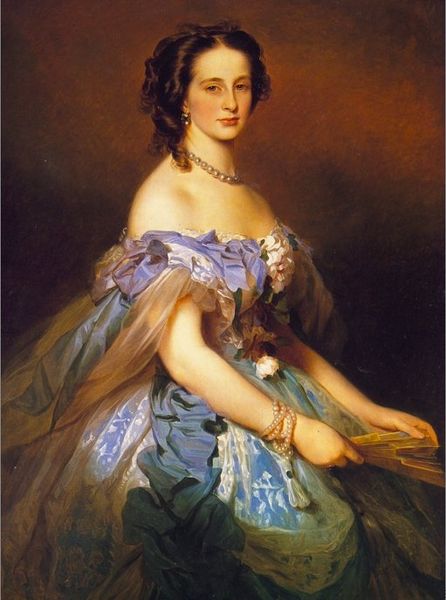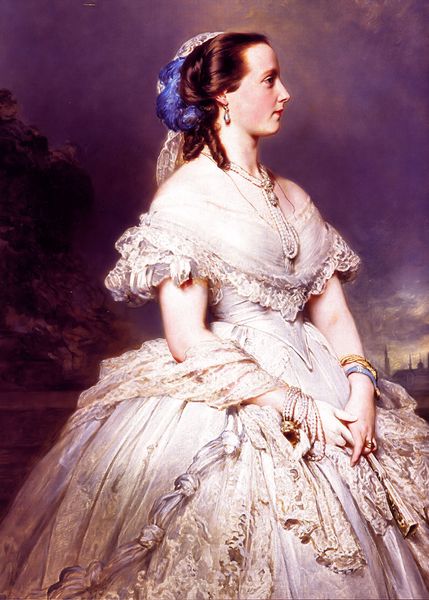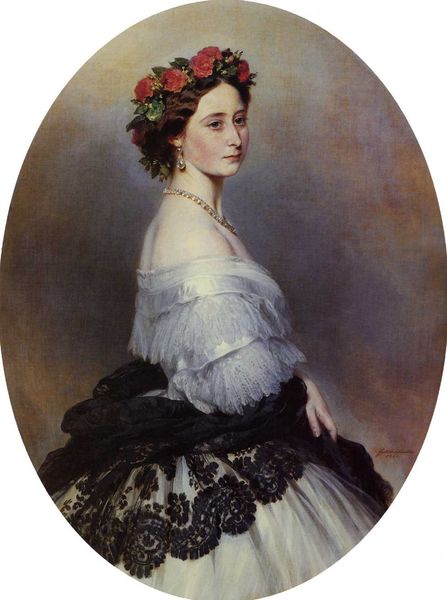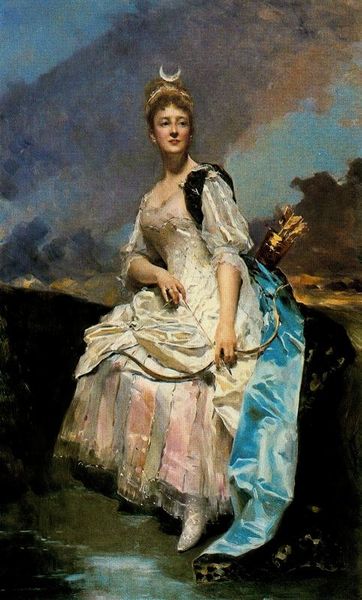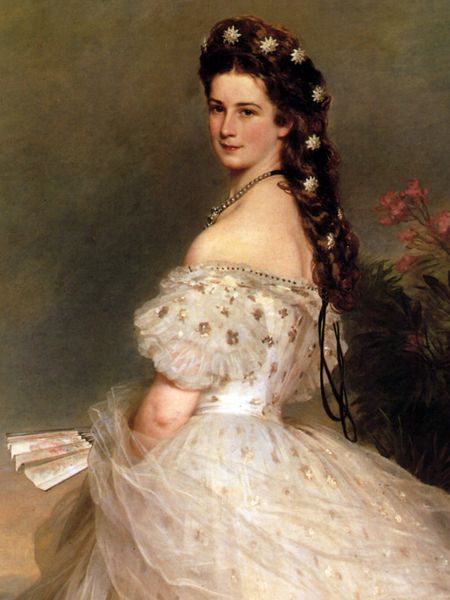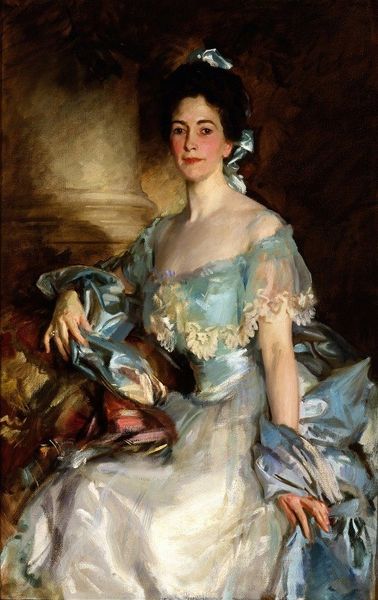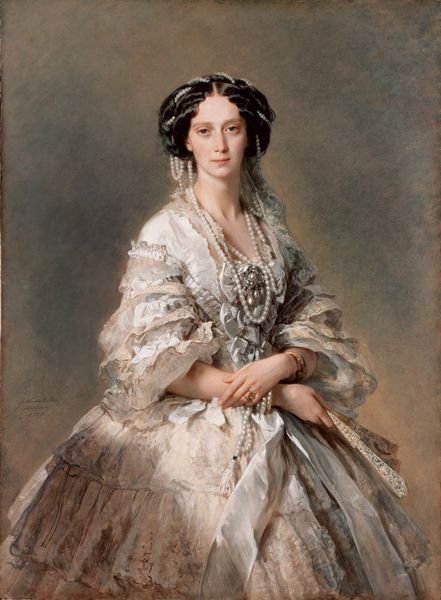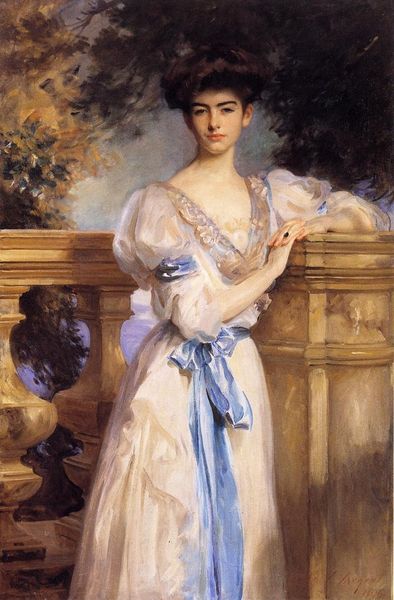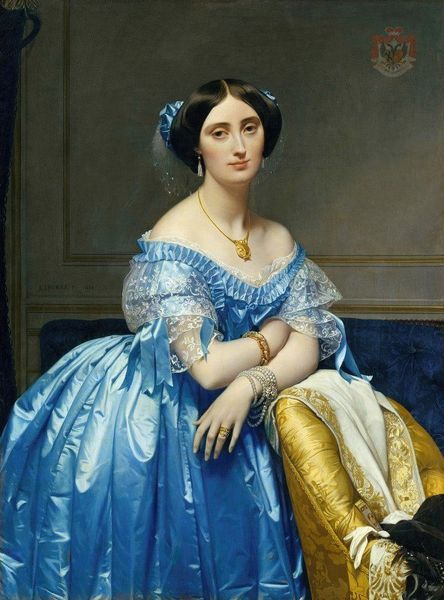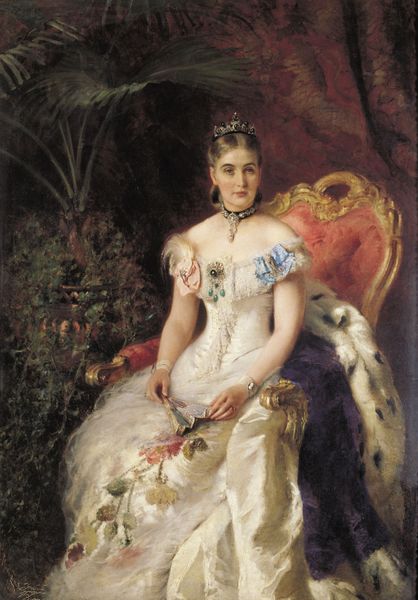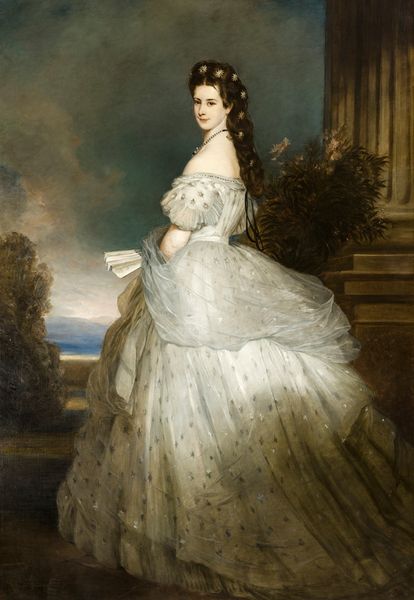
Copyright: Public domain
Editor: This is Franz Xaver Winterhalter’s “Alexandra, Princess of Wales,” painted in 1864 using oil on canvas. I’m struck by the opulence, but there’s a stillness too. The dress almost consumes the figure, and yet, she maintains a poised and reserved presence. What do you see in this work? Curator: Primarily, I see an exercise in composition. Note how Winterhalter orchestrates the textures: the stiff formality of the gown contrasts with the softness of Alexandra’s face. The painter also manipulates the light. Consider the dark background which pushes Alexandra forward and highlights her radiant, almost luminous, complexion. Observe the formal use of diagonals within the skirt's folds. Do these strike you as contrived? Editor: I can see the contrasts you're talking about, and how her face really stands out against the muted background. The way the light falls on the dress, though, seems almost too perfect – almost like it flattens it somehow, despite the ruffles. I was just wondering, were these kinds of calculated contrasts a trend for this era? Curator: Yes, to an extent. This piece aligns with a larger move toward the stylistic aesthetics of Academic Art. Semiotically, it signals power through controlled representation, as opposed to raw, untamed expression. It echoes earlier classical ideals of beauty. What emotions, if any, does Winterhalter invoke? Editor: Hmmm, maybe less raw emotion, and more… idealized beauty and serenity? Thinking about the semiotics and contrasting textures helps me see how controlled this portrait really is. Curator: Precisely. The image doesn’t solicit an emotional response, but rather projects an image of serene authority and elegance, rendered through the considered handling of paint and form. Do you appreciate it more now? Editor: I do! Understanding the visual strategies and the historical context makes the painting much more compelling than it was at first glance.
Comments
No comments
Be the first to comment and join the conversation on the ultimate creative platform.
